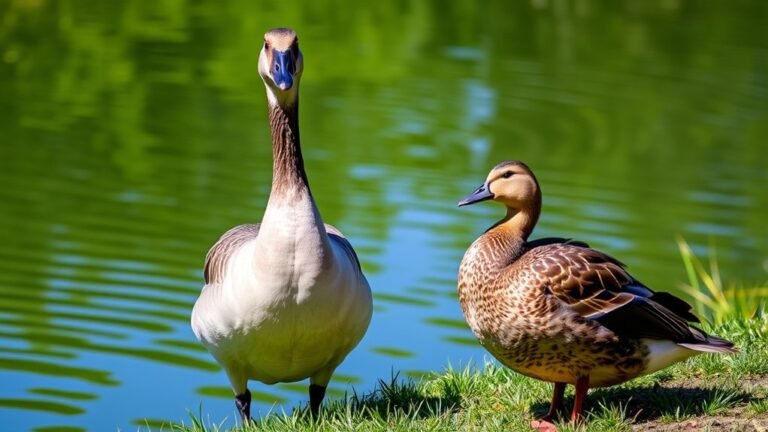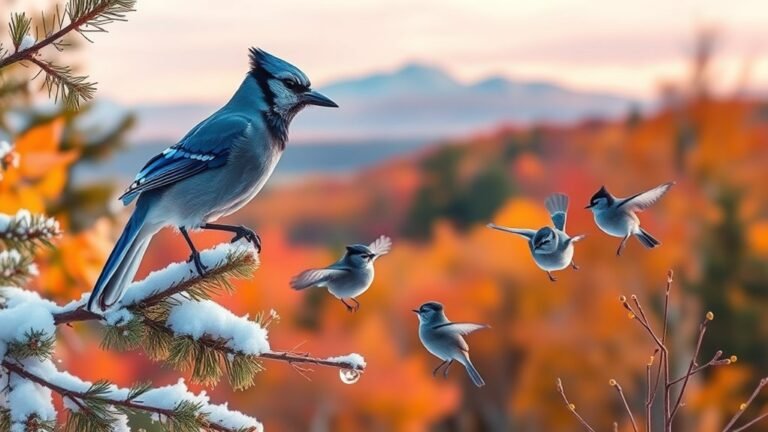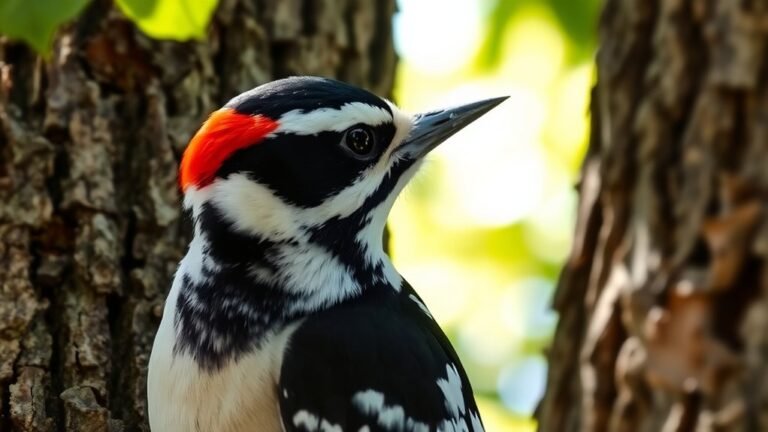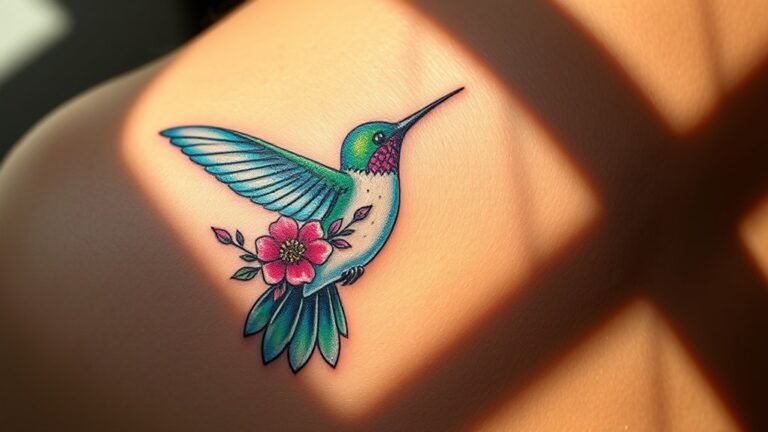Identifying Purple Birds: Common Species Overview
When you look for birds, spotting purple ones can be a fun experience. The Purple Martin has shiny blue feathers and likes to hang out in cities. The Common Grackle has bright, shiny colors and often gathers in groups. You might also see the pretty Purple Finch in many different places.
Each of these birds is special in its own way. Learning how to tell them apart can help you enjoy bird watching even more. What features do you notice that help you know if a bird is part of the purple family?
A Quick Overview
Purple Martins have shiny blue feathers and sing cheerful songs. They like to nest in man-made birdhouses for safety.
Common Grackles have colorful shiny feathers and make unique calls. You often see them in groups looking for food.
Indigo Buntings are bright blue birds. Male Indigo Buntings sing to attract mates in open woods and fields during springtime.
Violet-green Swallows are known for their green and purple feathers. They show off their acrobatic flying skills while catching insects in the air.
Purple Finches are known for their pretty colors and sweet songs. They live in forests and neighborhoods and enjoy eating seeds and berries.
Purple Martin
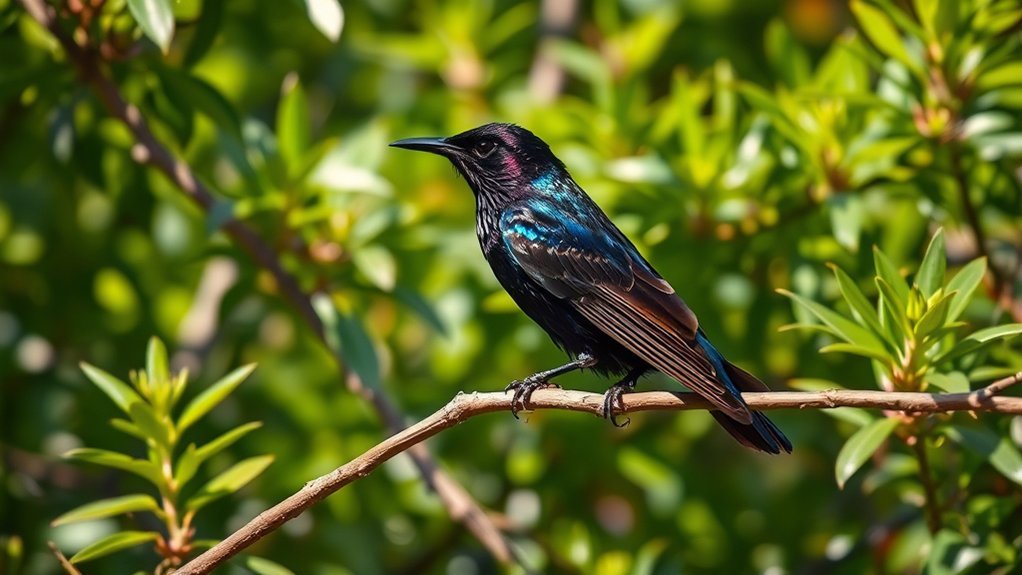
When you see a Purple Martin, it's hard not to be amazed by its shiny blue feathers and smooth flight.
These birds love to hang out in big groups. They like to nest in man-made birdhouses. This helps them stay safe and healthy.
You might find these birds friendly, especially during their nesting time from late spring to early summer. The male Purple Martins usually come back to their homes first. They work hard to protect their space.
With their cheerful songs and active play, Purple Martins add joy to the area.
Learning about them can help you appreciate how important they're to nature. You can even make your yard a nice spot for them to visit!
Indigo Bunting
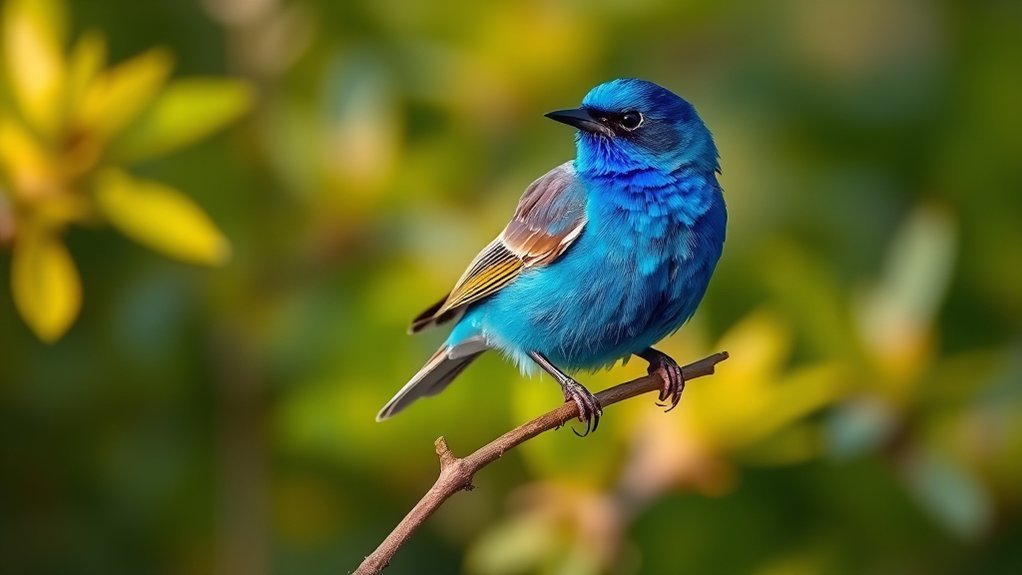
The Indigo Bunting is a beautiful bird. Its bright blue feathers make it easy to spot, especially in the spring. Male Indigo Buntings sing to attract female birds. This singing helps us understand how they socialize with each other.
You can find Indigo Buntings in open woods, fields, and areas with lots of shrubs. They love places filled with wildflowers because these flowers provide food and shelter. The buntings mainly eat seeds and insects. They look for their meals among the plants.
When it's time to migrate, these birds fly alone or in small groups. Watching them in the sky can be a stunning sight. If you enjoy birdwatching, sharing your sightings with friends can make the experience even more fun.
Learning about their homes and habits can help you appreciate Indigo Buntings and the places they live even more.
Common Grackle
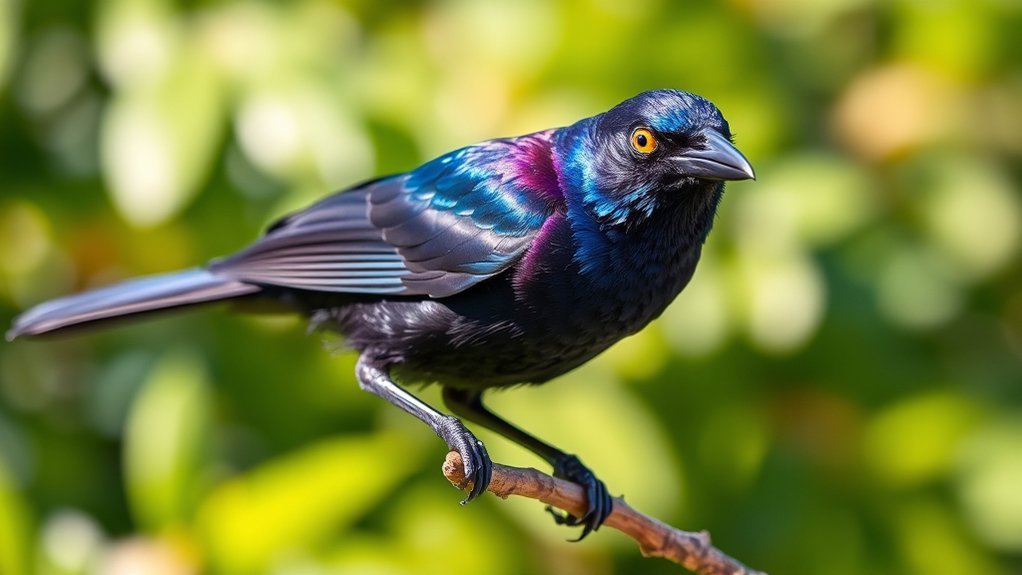
The Common Grackle is a colorful bird that stands out with shiny feathers. Its feathers shine in purple, blue, and green colors. You can find these birds in places like parks, fields, and cities. They like to be around people and adapt easily to our presence.
Common Grackles are social birds. They often search for food in groups. This behavior shows their boldness and curiosity. You can hear their unique calls, which sound like a mix of rattles and whistles.
These birds eat a variety of foods. Their diet includes insects, seeds, and even scraps from humans.
Learning about Common Grackles can help you enjoy birdwatching even more. They're vibrant and interesting creatures to observe.
Violet-green Swallow
Violet-green Swallows are beautiful birds with bright green and purple feathers. They're fun to watch as they fly through the air. These birds have interesting ways of building their homes and catching food, which makes them popular with bird lovers.
- Violet-green Swallows usually make their nests in holes in trees or in buildings.
- They use grass, feathers, and other plants to build their nests.
- These birds eat insects, catching them while they fly.
- They can perform amazing tricks in the sky, darting quickly to grab their food.
- You can often see them around ponds or rivers where there are lots of insects.
Watching Violet-green Swallows is a joy, and their lively nature makes them a great sight to see!
Purple Finch
The Purple Finch is a lovely bird with bright colors and sweet songs. You can spot them in forests, on farms, and in neighborhoods. They like to eat seeds and berries.
During winter, Purple Finches often gather in small groups. Their cheerful calls make it easy to notice them chatting with one another. They usually build their nests in trees, hiding them well so others can't see.
Learning about the Purple Finch and where it lives can help you enjoy watching these birds even more. They're a special part of our world, and seeing them adds joy to our lives.
Aceros Purple
The Aceros Purple is a beautiful bird that catches the attention of birdwatchers and researchers.
Its plumage looks amazing and adds to its charm. This bird lives in special places and has unique behaviors that make it interesting. You can spot them in:
- Colorful tropical rainforests
- Wetlands with lots of plants
- Urban parks where they can safely find food
- Farmlands near forests
- Mountain areas with plenty of fruit trees
Aceros Purple likes to search for food in pairs or small groups.
They've distinct calls and communicate with each other. For building nests, they often choose tree hollows, which keeps their young safe.
Learning about where they live and how they act makes each sighting special for birdwatchers. Each encounter with the Aceros Purple can be a delightful moment in your birdwatching adventure.
Lavender Waxbill
The Lavender Waxbill is a beautiful little bird found in sub-Saharan Africa. It has soft lavender colors on its body and a white belly. This makes it a lovely sight in the grasslands and bushlands where it lives.
These birds enjoy being in small groups called flocks. They like to search for seeds and insects in the grass. Their cheerful chirps fill the air and make their surroundings lively.
Lavender Waxbills can live in different types of habitats, which helps them adapt and thrive anywhere they go.
Bird lovers really appreciate Lavender Waxbills for their unique looks and friendly behavior. By learning about these charming birds, you can feel a part of a fun community that loves nature.
Bluethroat
The Bluethroat is a small bird that many birdwatchers love to see. It has bright colors and a beautiful song. This bird likes to live in wet places and areas with lots of bushes.
Here are some fun facts about the Bluethroat:
- Male Bluethroats show off their bright blue throat when it's time to find a mate.
- They make different sounds to communicate and show their singing skills.
- To attract females, they perform special dances.
- Bluethroats like to build their nests in thick plants to stay safe.
- Their diet includes insects and berries, and they change what they eat with the seasons.
Learning about the Bluethroat helps us appreciate how unique these birds are.
When you watch them, you connect with nature and join others who care about wildlife.
Whether you're just starting or have been birdwatching for a while, the Bluethroat is a wonderful bird to enjoy!
Purple Gallinule
Spotting a Purple Gallinule in its wetland home is exciting for birdwatchers. This beautiful bird has bright colors and long, colorful legs. It likes to live in marshes, near ponds, and in thick reeds, where it can find food and shelter easily.
Purple Gallinules walk in a funny way on floating plants. They're good at moving around in wetlands. These birds look for seeds, insects, and aquatic plants to eat. They use their long bills to poke in the water and find tasty snacks.
During breeding season, their calls fill the marshes, making the area come alive with sound.
Watching a Purple Gallinule helps you appreciate birds and the fragile environments they live in. So, take a moment to enjoy the beauty of nature and these unique birds!
Frequently Asked Questions
What Habitats Do Purple Birds Prefer for Nesting?
Purple birds like to live in different places, especially near water. They choose spots like bushes, trees, and fields to make their nests. These areas help them find soft materials to build their homes and keep their babies safe. This choice of habitat helps them raise their young successfully.
Are Purple Birds Migratory or Resident Species?
When we look at purple birds, we see that some move to different areas for breeding, while others stay in one place all year. The ones that migrate travel to find better weather or more food. The ones that are residents make homes in specific places. They adapt to their local settings and use the resources around them. In this way, purple birds show us a mix of both migratory and resident behaviors.
What Are the Main Threats to Purple Bird Populations?
Purple bird populations face big threats from habitat loss and climate change. When their homes are damaged or change, these birds find it hard to adjust. This can lead to fewer birds and can upset the balance in their ecosystems.
Habitat loss happens when people build roads, cities, or farms where birds used to live. Changes in climate, like warmer temperatures and different weather patterns, also make it tough for birds to thrive.
Together, these issues can make it harder for purple birds to find food, raise their young, and survive. It's important to protect their habitats and work on solutions to fight climate change to help keep purple birds safe.
How Can I Attract Purple Birds to My Garden?
To attract purple birds to your garden, try these simple tips. First, put out nectar feeders filled with sweet nectar. Place these feeders near colorful flowers that birds love.
Next, add birdhouses in quiet and safe spots. These houses give birds a nice place to rest and build their nests.
Do Purple Birds Have Any Unique Vocalizations?
Yes, purple birds have special sounds that help them talk to each other. Their calls change depending on where they are. These sounds help them find mates and protect their homes. This makes it easier to enjoy their behaviors and see how they add to nature's variety.

Luna is the passionate founder and author of Birds and You, a website dedicated to sharing her love for birds with fellow enthusiasts. Through her engaging articles and guides, she aims to educate and inspire others to explore the fascinating world of birds. When she’s not writing, you can find Luna observing birds in their natural habitats or sharing beautiful bird photography on Pinterest. Join her on this journey to celebrate and protect our feathered friends!


